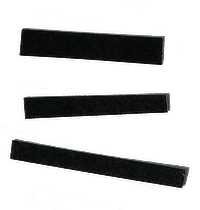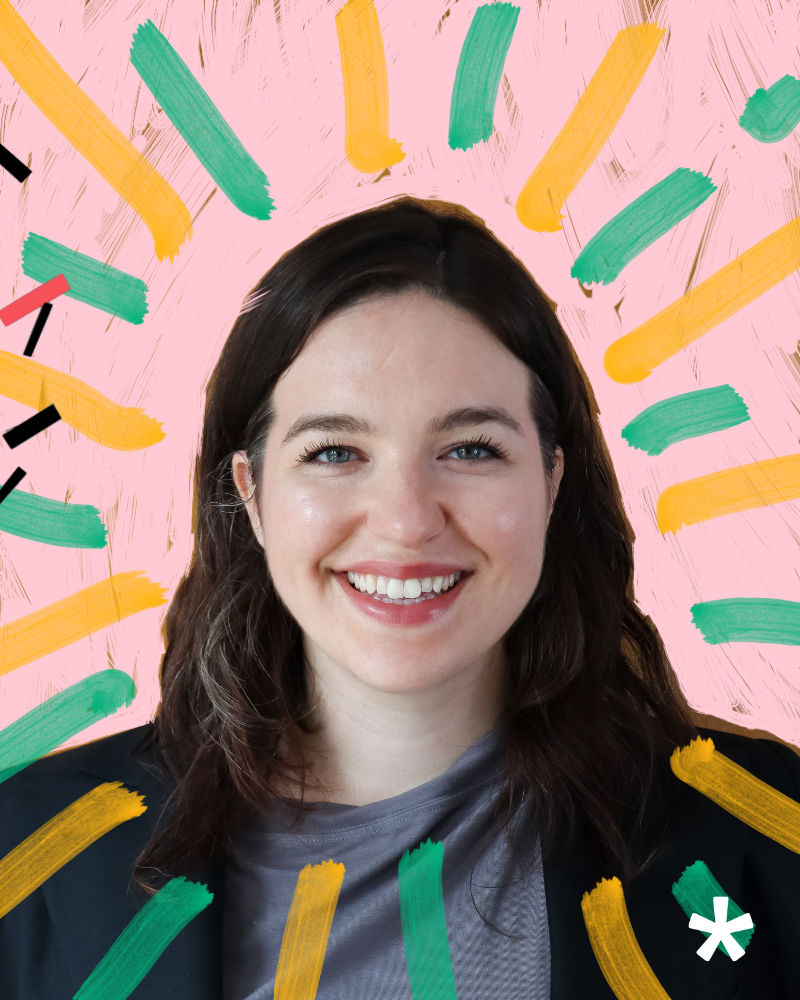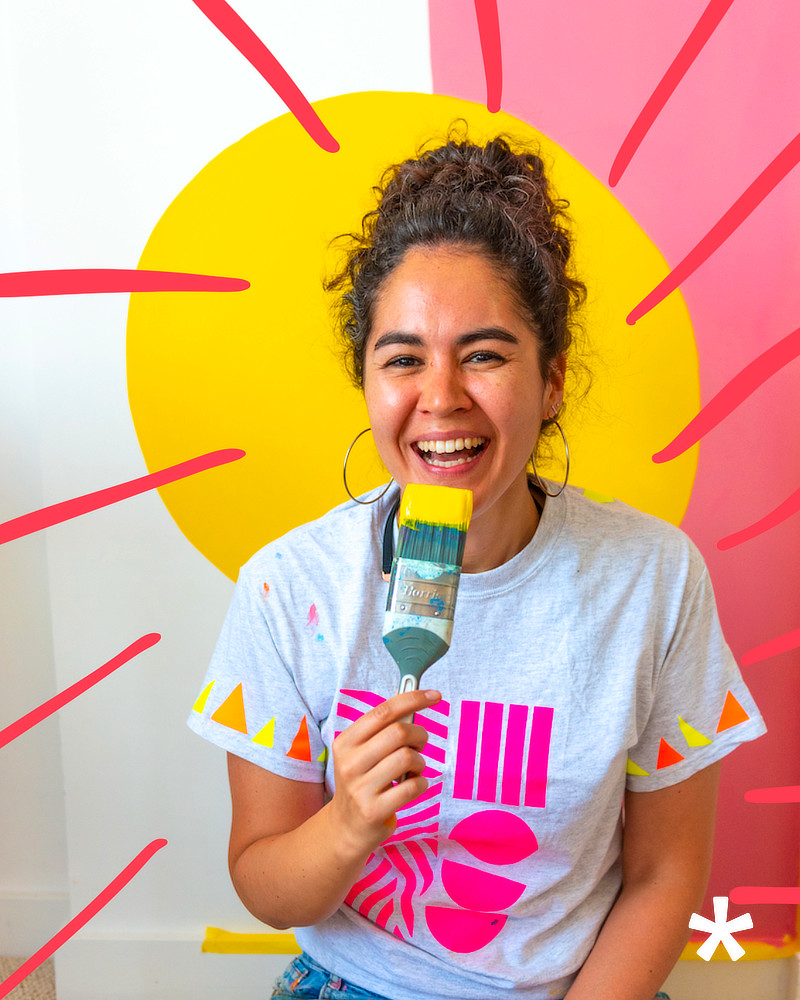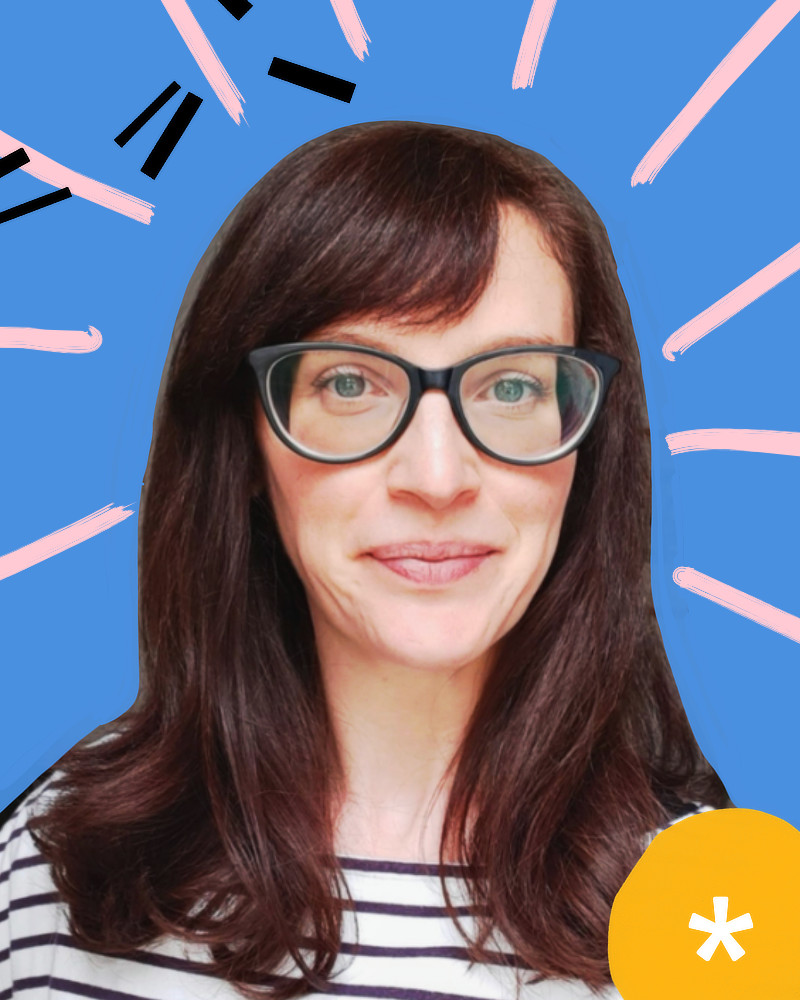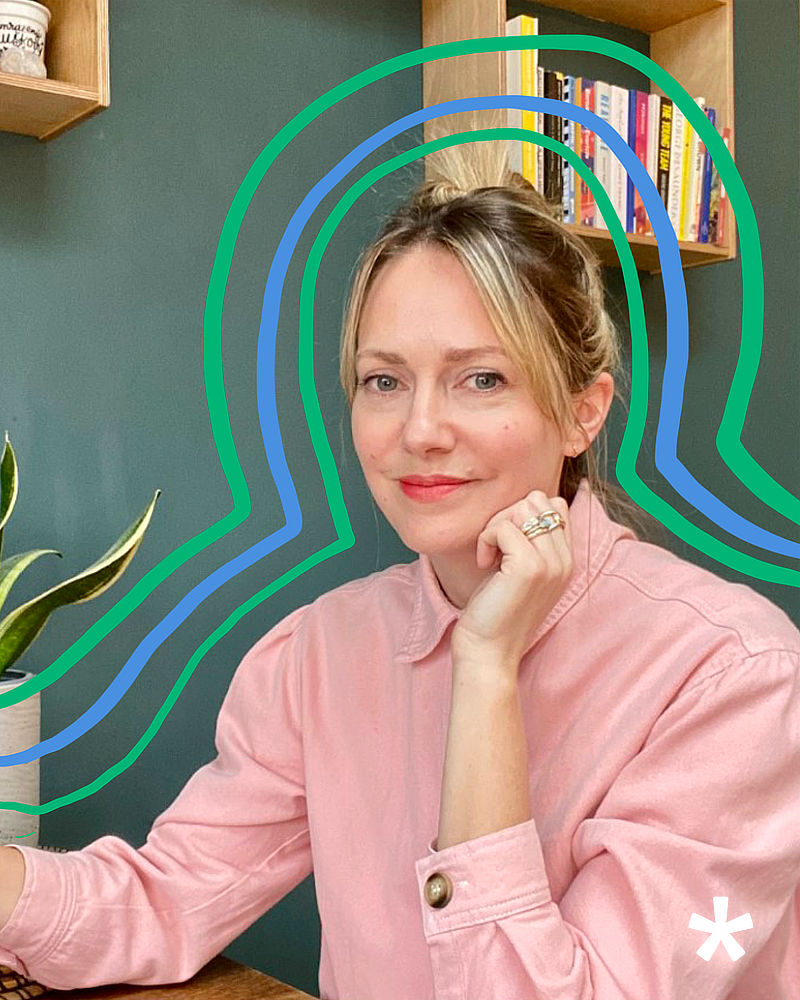Stationery brand Socolo is all about colour. A designer, artist and neurodiversity advocate, Chantal Gagnon was frustrated we she couldn’t find a notebook on coloured paper. Channeling her frustration she decided to launch her own stationery brand, designed for adults with dyslexia and visual stress, with ‘no white paper’ at its core. I talk to Chantal about her journey into design – including how she ended up making motion graphics for the music industry – and how her own neurodiversity has helped her do things differently.
I love the name Socolo. Can you tell me how you came up with it?
Socolo is short for Splash Of Colour. At the time, I knew I would not be using white paper for any of the stationery and that colour would be an integral part of the company. I spent hours toying with words and the thesaurus, trying to figure out how to incorporate colour into the name of the company, until I finally came up with Socolo. I liked how it was both fun to say and phonetic. It was also something I could easily spell. It would be terribly irritating if I had to constantly Google how to spell the name of my own company. With some of the earlier brainstorming, that would have been the case!
“As for dyslexia, I love how it has shaped me into such a creative problem solver. I can also effortlessly design, spin around objects and construct things in my head.”
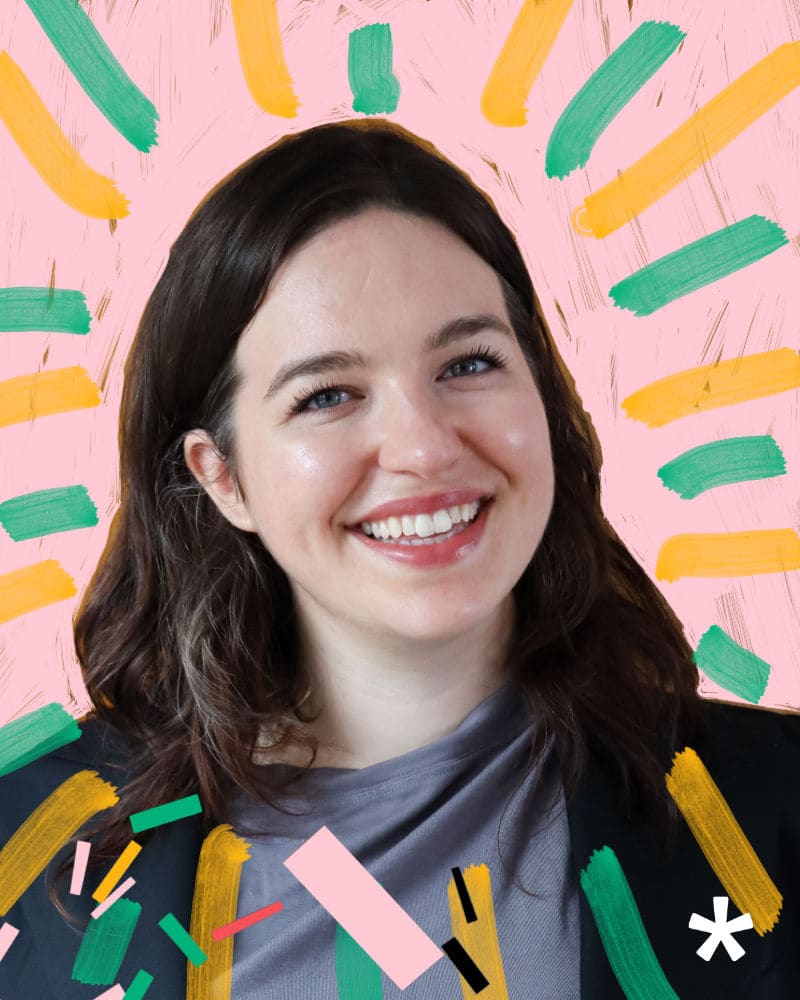
You have dyslexia and Irlen syndrome, and share your experience on Instagram, the funny and the bad. Our world isn’t really designed for anything outside the norm, which is what I love about your brand Socolo. You’ve designed a product to make life easier for people with neurodiversities and visual stress who find it really difficult to work on white paper. Can you tell me about when you decided to start Socolo? Was there a moment or was it a gradual decision?
I decided to start Socolo in under an hour. Prior to Socolo, I spent a number of years attempting to launch a business that was a very bad clash for my neurodiversity. One night when I was googling non-white paper notebooks and could not find any that were made for adults, I burst out crying. With the mounting stress of my other business’ struggles, a lot of frustrations needed to be released. “I don’t understand why it is so hard to find non-white notebooks,” I sobbed to my partner. “Why are dyslexic products only made just for children? I just want a notebook that is easy for me to use.” And then it hit me, I am a graphic designer, I would know how to do this. I already have learnt how to start a company and I can afford the start-up costs. And then I just dove right in. At first, I attempted to pursue both enterprises together, but Socolo was far more fun and less stressful. I quickly put the other business on hold. This may sound strange, but Socolo is so inline with every fibre of my being. Once I had the idea, there was never a time where it felt that I should not do this. Every part of me was telling me to do this and is still telling me that. I think that is why I was able to decide to pursue this idea so quickly and easily. There are some days where I find the business very challenging, but it never feels like an uphill battle. I am very thankful for the failure of my previous business, as it showed me how things should not feel.
How would you describe your aesthetic?
Since launching Socolo, my aesthetic has changed so much. As a graphic design student, I was taught that simplicity constituted excellent design, and this was reinforced throughout my career. Having to comply with strict brand guidelines and clients’ visions, I did not feel in control of my aesthetic. Socolo has been my opportunity to regain control of my creativity and get playful. Now I would say my aesthetic is colourful grit! I enjoy searching through colour theory books for ideas, visiting hardware stores to collect paint swatches, and playing around with my felt tip collection. Maximalism is a major source of inspiration for me since I enjoy the surprising colour combinations and playfulness. Dyslexics tend to excel at simplifying complex ideas and information, and I believe this is why I am drawn to maximalism, despite the fact that my designs are considerably simpler and do not belong within that genre. The grit comes in because I like to tear things up and distressing the materials I use. The more I am stepping away from graphic design work, the more I am rebelling against my old design principles. I am in exploration mode at the moment and am really excited to see how my aesthetic evolves.
You’re also a freelance graphic designer, working with some really big names which I know you can’t discuss because of NDAs! What was your journey into becoming a graphic designer? Was it a childhood ambition?
I always loved art and design. I grew up in a small city in Canada where art was not valued or appreciated. Most of the schools I went to did not have an art program. My mother was very encouraging and did her best to enrol me in art lessons outside of school. I also enjoyed math and science. During my first year of university, I took half of my classes in math and science with the aspirations of becoming a storm chaser, and the other half in art and design in the hopes of becoming an industrial designer. At the time, I wanted to design furniture or toys. In all honesty, I could not keep up with the speed university required me to learn, and there was a lack of learning disability support, so I dropped the science classes and opted for a creative career, finding it easier to keep pace. During this time, a major recession hit and all of the arts funding at the university I was attending went diverted the sciences, and many of the creative professors left. When this happened late in the year, I applied to any institution or course that would accept me. That’s how I wound up in London. I was accepted for a diploma in design communication at a tiny collage that no longer exists. I enjoyed graphic design and was obsessed with the advertising world as that was one of the main sources of creativity I had access to growing up. Later, I graduated from London College of Communication with a degree in design and media. My favourite part of university was conducting creative research and idea generation, which is very much in line with having dyslexia, and I knew the goal was to one day be the creative director of something.
After graduation, I landed my ideal job as a creative strategist for a digital marketing agency. In university we are very much taught that we have the power for positive change, so it was a rude awakening when I entered the workforce and realised that advertising and marketing clashed with my ethics. I know this should have been obvious, but I was hopeful. I eventually left to venture out on my own as a freelance creative strategist. The work that was coming my way became increasingly immoral, and I continued saying no to work. Then I advertised myself as a graphic designer and I managed to secure more jobs with which I could ethically agree, but I felt creatively constrained. Early on, I lucked out and was contracted to make some motion graphics for the music group Coldcut. This opened the door to do more work within the music sphere. I enjoy working for people in the music industry, as I tend to have more creative freedom and can play around a lot more. While graphic design hasn’t been a lifetime goal of mine, being creative has always been. My hope is for Socolo to be successful enough so I can leave freelance work and devote more time to exploring myself as an artist. I have enjoyed design, but I do feel a pull towards art.
“The best part about having an abundance of ideas, is that ideas are not precious to me. If the idea is not working, I don’t hold on to it and force it. Instead, I come up with something else. If someone steals or rejects an idea, it’s okay, I’m already brainstorming other ones.”
Coco Lom is a fellow artist with dyslexia and often talks about how it helps her see the patterns that influence her work. How do you think having dyslexia and Irlen syndrome has influenced your work? And what are some of the challenges as well?
Coco Lom’s art is fantastic! I have talked to her online a few times, and she is so friendly and kind. A really lovely person. Irlen syndrome has made me more sensitive to colours, contrast, white and glare. I know that this skews my aesthetic and tastes. I have a ridiculously hard time choosing colour palettes. I prefer dark colours, and work in dark spaces. I am also drawn to colours that vibrate when I look at them. Because I am used to seeing colours and pictures morph and move on the page, I am drawn to designs that do the same for everyone. Socolo is very much about comfort, so I do try to keep my designs comfortable to look at, but every once in a while you will see this creep in. As for dyslexia, I love how it has shaped me into such a creative problem solver. I can also effortlessly design, spin around objects and construct things in my head. More often than not, when I go to design something, I see the design in motion. It’s like an animation in my head. For example, when I’m designing a wavy page layout, I see the waves moving like the ocean in my head. Then I have to translate that into a still image. When I had more free time, I used to like making animations as a hobby, and I think it’s because my brain naturally works in the format. I enjoy coming up with new ideas, conducting research, and making strange connections, which is typical among dyslexics. The best part about having an abundance of ideas, is that ideas are not precious to me. If the idea is not working, I don’t hold on to it and force it. Instead, I come up with something else. If someone steals or rejects an idea, it’s okay, I’m already brainstorming other ones. The down side to this is that I get so many ideas, that my attention span for an idea can be a bit short. I believe this is why I like working as a creative strategist: I could come up with hundreds of concepts. The client would select their favourite, and I would hand over the project to be completed by another team. I was then free to dream up hundreds of more ideas for another client. When I am in full flow on a project, I will start drawing mirror-image. This can get a bit frustrating at times and sort of keep me on the edge of flow, rather than in flow. At times where it does not matter if I am drawing mirror-image, then I can let go and fall into flow.
Dyslexics are also known for having an acute sense of justice. Most of the time, I would consider this a positive trait. I tend to look at designs and team work from the standpoint of what is best for the common good. However, it really grates on me when projects try to cut too many corners and begin to fake things. I worked on a project for a musician where thousands of fans submitted videos and my job was collage them onto screens that would be playing the videos behind the performer. The original brief wanted me to put as many people up on the screen as possible. We ended up only putting about 230 people on the screen and I was asked to make it appear as though we had put up a lot more. If we hadn’t faked it, we could have easily put over 1000 people on the screen. These fans put so much effort into their videos and it felt awful to not put in as much effort as they did. To this day I still get upset thinking about this project, which is one of the drawbacks of having dyslexia. I enjoy having a strong sense of fairness, I just wish it did not upset me so much.
Irlen syndrome and dyslexia can be exhausting, so I like taking brain breaks throughout my day by meditating, napping, or simply closing my eyes for a few minutes. I believe meditation has aided my creative process, and I am grateful that it has come into my life as a result of my neurodiversity.

I loved your article in Neuromancers Magazine which questioned the idea of referring to dyslexia as a superpower or gift. I’m a mother of a dyslexic child and I often describe it to her as this. You made me question whether I’m doing this for her or for me. I’m still not sure — I think it’s for both of us — but I do recognise that life is harder when you have a neurodiversity. Do you have any thoughts on what actions we could be taking to make sure our services and products are more inclusive?
Thank you for your kind words. First, it is better to be positive about neurodiversity than negative. And part of being positive is making sure all services, place, and products are not only accessible, but inclusive as well. There are many small actions businesses can take right away, such as ensuring that their website and digital products are compatible with the accessibility features that come included on most computers and devices. The next thing is to understand that inclusive design benefits everyone. OXO did this with their Good Grips peeler. It was designed for arthritic hands but ended up being super comfortable for all hands and easy for children to hold onto. It is one of the top selling vegetable peelers in the world because it is so comfortable to use. Another example is making stores wheelchair friendly. Not just a stair free access to the front of the building, but the whole space. This makes the space pram friendly, age friendly, and gives everyone a more luxurious experience because there is more space to move around with ease. It is important to note that true inclusive design does not highlight the individual who needs an accommodation. It is about making services, locations, and goods adaptive and flexible in their usage, so that everyone may have equivalent degrees of enjoyment and involvement.
“If your idea is in alignment with you, then just go for it. It will energise you and it’s magical how things fall into place.”
There are difficulties in creating a stationery brand that doesn’t use white paper as standard as you need to order quite a lot of stock upfront. How could the paper and printing industry improve to help more small businesses like Socolo?
Colour paper has traditionally been used for low-cost flyers and posters that are intended for single sided printing. It would be ideal if colour paper was made with ghosting and double-sided uses in mind. For example, not all colours have the same opacity, which complicates maintaining a consistent level of quality across different paper colours. Socolo notebooks employ thicker than typical paper stock to reduce ghosting across all colours. Customers have given positive reviews on this, although the thickness of the paper limits the bookbinding options. What would be most helpful is if colour paper became more popular again. You would not believe how difficult it was for me to find a printer who was willing to print on colour paper! This way more printers would be willing to work with colour paper and they would be more inclined to keep colour paper stock on hand. This would shorten the turnaround time and decrease the production cost. It would also be lovely if more colours were available in a variety of paper weights. The majority of colours are available in very thin paper or very thick paper. There aren’t nearly enough colours in standard notebook paper weights.
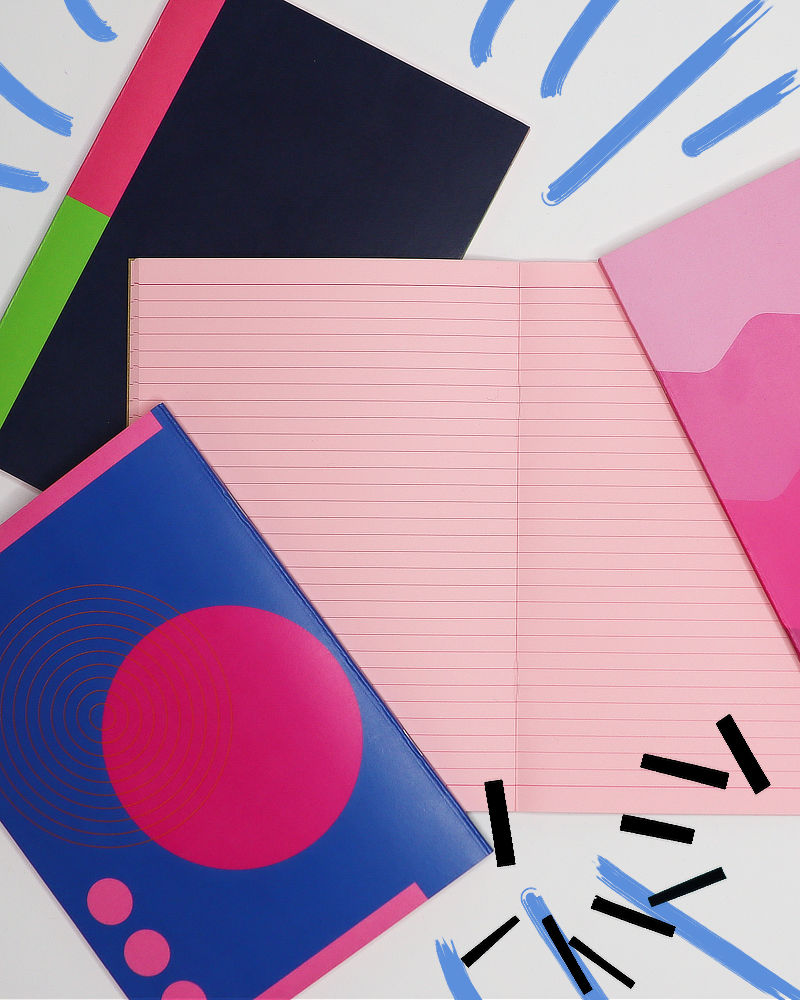
What do you like most about working for yourself?
The creative freedom, being able to take brain breaks when needed and the ability to create a workspace that accommodates and supports my neurodiversities. I also don’t have to work overtime or pull all-nighters if I don’t want to. Working in an office environment was so tough and draining for me, I don’t think I could ever go back to it. I am enjoying my work-life balance and relaxing work environment way too much. I also love that I don’t have to worry about pleasing an employer or getting fired. I am such a people pleaser, so removing this pressure from myself has been a huge relief.
A huge part of starting and growing a business is having the right mindset. What are some of the things you do to stay motivated?
I sat down and truly considered what success meant to me, as well as what kind of life I want to live, and what are my priorities. I wanted to create a life for myself in which I could exercise daily, prepare my own meals, meditate and have a few hobbies. To do work that I found fun, creatively fulfilling and serves as a catalyst for positive change. I was tired of constantly wanting to make a difference, but not being in a position to do it. I was tired of not having a work-life balance and not being able to spend time on things that give me pleasure.
“I am very thankful for the failure of my previous business, as it showed me how things should not feel.”
I was reminded by a friend recently about the importance of sharing our failures. It’s something we’re going to make sure we talk about more at Common Exception because it’s part of having a business. Can you tell me about a failure, and what you learnt from it?
I have failed many times in my life, and I think as a dyslexic I am accustomed to things not being easy and failing and having to try again. I am grateful for having dyslexia because of this. I have a tendency to go into projects and business ideas wanting to jump in with both feet and with the attitude of ‘if it fails, it fails’. Of course I try my hardest to not fail and sometimes it can really hurt when things do fail. But I love trying new things more, and these days I try not to take things too seriously. Remembering that failure is far easier to deal with than regret also helps. Regret is the absolute worst. When I went to art uni, I truly believed that if I got a first, I would be able to get a good job and be successful. I think it was because I performed so poorly in elementary school and it took me so long to learn to read that grades became a measure of success for me, and I was always feeling like I had to prove myself through my grades. With that mindset, I was not nearly as adventurous in my experimentation as I should have been in university. I was so scared that I would fail uni, that I played things safe, and designed and created to my teachers’ preferred aesthetic rather than developing my own. When I applied for jobs, no one cared that I got a first. I did not have to be perfect. This has been a recurring theme in my life, as well as a major regret and I would say my biggest failure. I should have partied more, and developed more of a zest for life, rather than pulling all-nighters to earn high marks and burning myself out multiple times. I graduated high school with high 90s in all of my classes except English literature, yet I felt like I was not smart. Trying to be a good student was my biggest setback and made me quite a submissive employee. It took me until I was a few years out of uni to realise that being a good student is not something one should aspire to.
I consider failures valuable for what I can learn from them and I trust that they are leading me to my next endeavour. Through failure I have altered my definition of success. If I am about 70% happy with how a project turned out and had fun doing it, got to experiment and had time to live life rather than simply work, that is 100% success to me. Failure also hurts the most when you’re competing against other people, something I learned at an early age. As a result, I quit competing. Team sport instructors hated this about me when I was younger, but I was never upset about losing and always had the most fun. As an adult, this has become my strength, it makes me glad to watch others thrive. I don’t consider other businesses, artists, influencers, and such as competition. This has given me the opportunity to meet and collaborate with many wonderful individuals.
What’s your advice for someone who has an idea for a business but hasn’t yet started?
Have a deep think about if a business idea is aligned to you. It may be a fantastic idea, but if it’s not in alignment with you, it will most likely end up feeling like paddling upstream. If your idea is in alignment with you, then just go for it. It will energise you and it’s magical how things fall into place. I also suggest not talking to people about it. I am big on collaboration, but for some reason, when starting a business, more often than not, people act as a distraction rather than a help. People will tell you all the reasons why your idea will not work, people will always think they can do your business better than you can, and they will offer unhelpful and un-researched suggestions. Stay focused, you got this. And remember that no one knows your business better than you do. And have fun!
What’s next for you?
I recently got my meditation and intuition certificate, so I am looking at starting an additional business in the mindfulness sphere in the new year. I am hoping that these businesses will give me the freedom to explore myself as an artist, rather than a designer.

